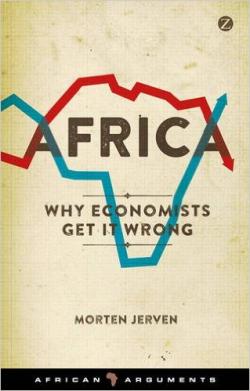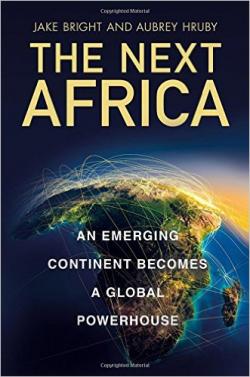PBS: Escaping Eritrea … [Read More...] about ካብ ውሽጢ ቤት ማእሰርታት ኤርትራ
The Many Africas
Beyond Continental Caricatures



In his memoir, The Lion Awakes, Ashish Thakkar describes how, as a young entrepreneur selling computer parts across Africa in the 1990s, he noticed that flights within the continent seemed to take longer than the distances on a map would suggest. “Were the planes slower?” he wondered. In fact, he learned, the commonly used Mercator projection vastly understates the size of Africa, and its 54 countries, relative to other continents. You wouldn’t know it from most maps, but the continent is large enough to fit China, India, Mexico, the United States, and western Europe within its borders—with room to spare.
The distortion of Africa goes beyond cartography; Western journalists and academics have a history of misinterpreting and misrepresenting the region. Failing to account for the size, diversity, and dynamism of the continent—and relying on incomplete and inaccurate data—they have fashioned easy-to-comprehend yet warped and incomplete stories. In past decades, the main story line tended to be one of failure, focused on conflict, disease, corruption, victimhood, and poverty. A headline on the cover of The Economist in 2000 captured the gloom: “The hopeless continent.” By 2011, however, the magazine touted an “Africa rising.” But such simplistic optimism does not capture the full story, either. With more than one billion people, over 2,000 languages, and some of the fastest rates of national GDP growth in this century, the real Africa has always been more complicated.
Challenging as it is to properly capture the complexities and contradictions of a region as large, diverse, and dynamic as Africa, three recent books seek to replace the caricatures of Africa’s economic performance with more accurate pictures. Morten Jerven picks apart the flawed analyses of mainstream economists, Thakkar recounts his two decades of personal experience as an entrepreneur, and Jake Bright and Aubrey Hruby tally the risks and benefits of doing business on the continent. Taken together, these books provide a valuable corrective to the fraying narrative of failure. The Africa that emerges from their pages is one of remarkable energy, creativity, and opportunity, in spite of the grave challenges.
Ultimately, however, their accounts still add up to an incomplete story. In emphasizing economic and business perspectives, the authors cannot tell readers how much people’s lives are actually improving, whether individuals are becoming more or less capable of achieving their aspirations, whether communities are becoming more or less resilient to crisis, and whether the distribution of benefits in Africa is becoming more or less equal.
THE DEVIL IS IN THE DATA
According to Jerven, the dominant narrative of African economic failure persists because economists ask the wrong question: they seek to explain why Africa has failed rather than show how Africa has actually performed. In fact, over the last century, many African economies have experienced episodes of both growth and decline. Immediately after independence in the 1950s and 1960s, African economies grew faster on average than the rest of the world. They lagged behind from the mid-1970s into the 1990s, largely due to external shocks and bad policies, before growth returned in the late 1990s. Economists missed this variation, Jerven argues, in part because they were so intent on explaining failure.
They were also basing their analyses on incomplete data sets and incorrect assumptions. Nearly all economic data capture only the value of goods that flow through official channels, missing the informal sector, even though it is crucial to livelihoods across the developing world. Worse, when data are missing for a country, economists simply extrapolate from neighboring countries, ignoring important differences in resource wealth, human capital, and trade. Many data sets go back only to 1960, so there is no historical context to explain the economic activity that followed. Other data, such as estimates of corruption, are based on opinion surveys rather than direct observation.

To illustrate the resulting distortion, Jerven compares the rankings of 45 sub-Saharan countries by per capita GDP in three commonly used data sets. In one of these, Guinea ranks as the seventh-poorest country, but in another, it just misses inclusion among the ten richest countries. Mozambique, depending on the source, is among either the eight poorest or the 12 richest African countries. Given the uncertainty in the data, it’s hard to see why anyone should rely on policy recommendations based on such flawed sources. Garbage in, garbage out.
Jerven also charges that economists mistake correlation for causation, leading them to identify faulty silver-bullet explanations for Africa’s economic performance. He rejects arguments that blame slow growth on the absence of robust institutions, a lack of social capital, or particular features of a country’s history, ethnicity, climate, or geography. Weak institutions may correlate with low GDP, he argues, but studies have not reliably demonstrated which way the causality runs. He challenges the data and conclusions in Daron Acemoglu and James Robinson’s Why Nations Fail, which pinned the blame for poverty on extractive government institutions. To claim that Africa is poor because of weak institutions may get the relationship backward; poverty may be a cause of weak institutions.
The distortion of Africa goes beyond cartography.
Ultimately, Jerven concludes that although the narrative of chronic failure is a distortion, so is the “Africa rising” narrative. Again, the problem is exacerbated by the scarcity of reliable data. He points out that many countries have not updated the baseline data from which they calculate GDP. In 2014, when Nigeria updated the base year it uses to estimate the size of various sectors, its official GDP nearly doubled overnight, surpassing that of South Africa. Was the country suddenly twice as rich? Not yet. As other African countries update their own economic benchmarks, their GDP figures will also rise, perhaps due more to better measurement than to increases in economic activity—thus making it harder to determine the real rate of growth.
Finally, rising GDP figures reveal nothing about the informal sector and very little about a country’s level of poverty or vulnerability to future shocks. Jerven thus worries that such upticks in GDP convey misleading information about the conditions of average citizens’ lives. To get a more accurate picture, he calls on economists to capture country-level nuances by studying actual economies rather than fishing from afar for correlations in abstract numbers. This is valuable advice, but even a careful study of actual economies will face many of the same shortcomings that hinder broader analyses, unless the quality and availability of data improve substantially. Moreover, observers should still pay attention to correlations among growth and governance and history, even when perfect causality may not be established.
THE START-UP CONTINENT
For greater nuance and a larger dose of optimism, look to The Lion Awakes, a compelling homage to Thakkar’s family and an argument for correcting the reputation of the continent Thakkar has come to know as an entrepreneur. Contrary to its image in Western media, Thakkar argues, Africa is not a “hopeless charity case” but a continent open for business. It is a good place to launch and grow a profitable company, enjoy a high quality of life, and even get rich. Thakkar’s Mara Group, which invests in companies across the region, is presented as proof of this claim, and he offers his personal story as a striking example of the triumph of commerce and confidence over trauma.
Economists mistake correlation for causation, leading them to identify faulty silver-bullet explanations for Africa’s economic performance.
Thakkar comes from a family of Indian traders in Uganda. His parents lost everything during the brutal reign of Idi Amin; after Amin expelled Asians from the country in 1972, they fled to the United Kingdom, where Thakkar was born. Years later, eager to return to Africa, his family found itself in Rwanda during the 1994 genocide. Once they returned to Uganda, the 15-year-old Thakkar began selling computer parts he sourced from Dubai.
Thakkar recalls his early travels in Africa in the mid-1990s, when “running water was a luxury,” “constant electricity blackouts” were the norm, and “phones didn’t work.” Around the turn of the millennium, however, things started to improve. Thakkar observed that in places as diverse as Kampala, Nairobi, Dar es Salaam, Lusaka, and Lagos, “customs officials in those once chaotic airports were starting to smile a bit more and play by the rules. . . . The potholes were getting fixed. Garbage was being collected.” Africa, particularly within its cities, was shedding its past and becoming a confident, viable place for modern business. Thakkar’s own interests expanded from computer sales to include banking, real estate, information technology, call centers, glass factories, packaging, philanthropy, and more.
The key drivers of progress he identifies include improved leadership (exemplified in his view by President Paul Kagame of Rwanda), an innovative telecommunications industry, an energetic youth population unleashing its pent-up demand, and the return of a highly educated diaspora, especially after the 2008 global financial crisis reoriented African expatriates’ perspective on the geography of opportunity. Most important, he says, was the arrival of cell phones; according to a 2015 report by the telecommunications company Ericsson, the number of mobile subscriptions in Africa has reached 690 million.
Thakkar also highlights the development of technology hubs, such as Kenya’s “Silicon Savannah,” and the explosion of Nollywood, Nigeria’s $3.3 billion movie industry, and he champions Africa’s many vibrant new start-ups. For him, the answer to Africa’s economic challenges is business, not foreign aid. “Western policies of institutionalized aid have done terrible harm to Africa for decades,” he writes, whereas China has flourished economically without such aid.
In reality, however, China has received billions of dollars in Western aid. And although aid to Africa has not been as beneficial as its strongest proponents claim, it has not been as damaging as Thakkar suggests, either. Aid should be judged at the level of particular projects in individual countries over time; it is no more helpful to caricature foreign aid than it has been to caricature its recipients.
OPEN FOR BUSINESS
Bright and Hruby, both of whom have experience with Africa in the private sector, present a similarly upbeat, although more analytic and cautious, picture. They set out to achieve a balance between “overly simplistic ‘Africa rising’ narratives” and what they criticize as “a new strain of Afro-pessimism.” While recognizing the limitations on the quantity and quality of available data, they call for a “multi-dimensional . . . more refined and data-driven” approach.
It is no more helpful to caricature foreign aid than it has been to caricature its recipients.
Over the past decade, Western businesses have started to take Africa more seriously. One factor behind this enthusiasm, Bright and Hruby note, has been better governance, including more multiparty elections, improvements in transparency, and tighter fiscal management. Bright and Hruby attribute greater importance than Jerven does to the role of institutions, yet demography may matter most of all: Africa boasts the world’s fastest-growing population, largest youth population, most rapidly urbanizing population, and fastest-growing consumer class. The result has been an explosion of demand for a range of consumer basics, from air travel to supermarket goods.
As does Thakkar, Bright and Hruby tell the story of innovation. M-Pesa, a mobile-phone-based payment system in Kenya, now handles transactions equivalent to one-third of the country’s entire GDP, providing millions of Kenyans with an alternative to bank accounts and credit cards. They also document a thriving culture of entrepreneurship that has emerged across the continent, including such start-ups as BRCK (a rugged WiFi router developed in Kenya and designed for rural areas) and Jumia (a Nigerian e-commerce site that lets buyers pay cash on delivery). They paint a picture of fast-paced technological growth and innovation that, in some sectors, have surpassed and influenced the West.
Despite their enthusiasm, Bright and Hruby catalog a number of challenges to continued growth. In several areas, Africa still accounts for less than its expected share of global activity. They call this “the problem of less than 3 percent”: even though it is home to almost 15 percent of the world’s population, Africa accounts for less than three percent of Google hits, less than three percent of global trade, less than three percent of mobile broadband subscriptions, and less than three percent of global private equity investment.

Africa also suffers from serious gaps in infrastructure. Only 32 percent of sub-Saharan Africans have regular access to electricity, and only one in four has a bank account. Africa’s road network is sparse and potholed, with Nigeria, the continent’s economic powerhouse, having a rate of road penetration that is just 15 percent of India’s. Just as Thakkar noticed decades ago, in many parts of the continent today, blackouts are still frequent, running water remains a luxury, and ATMs are largely absent.
Beyond these serious challenges, there are three “deal breakers” for Bright and Hruby that could set the region back. Africa’s large and growing unemployed youth population presents one of the greatest risks to political and social stability. The continued failure of public institutions to deliver the benefits of growth and higher incomes to all groups, and not just a small elite, also threatens progress. And a serious and unexpected global economic shock—and not merely a slowdown in China’s growth rate—could prove devastating. Notwithstanding these risks, the trends are positive. Bright and Hruby, like Jerven and Thakkar, conclude that Africa’s progress and potential are outpacing its challenges.
THE REAL AFRICA
My own experience, based on work in more than a dozen African countries over the past decade, leads me to a similar conclusion. There is tremendous promise in the dynamism of young African students and entrepreneurs; in Africa’s vibrant, growing cities; and in countries on the continent that have dramatically improved their leadership and institutions. The region’s abundant world-class innovation and talent are increasingly being harnessed to improve lives and generate wealth. This is an essential story to tell, and its telling is long overdue.
Africa’s large and growing unemployed youth population presents one of the greatest risks to political and social stability.
But this is not the full story, which is always much more complicated than either success or failure. First, any aggregate portrait of a continent obscures its heterogeneity. Every country exhibits its own social, economic, geographic, and political characteristics, and the experience of the average Ghanaian, for example, bears little resemblance to that of the average Sudanese—just as the experience of one of Africa’s billionaires would be unrecognizable to one of its malnourished rural poor. Although convenient for development organizations, a single concept of African growth may be less helpful in understanding what Thakkar calls “a vast polyglot place” and Bright and Hruby describe as “the most diverse continent on the planet.” This diversity demands to be disaggregated at the country and, most important, at the city level. For now, the data are too limited and unreliable, but that is changing as new businesses develop new tools and methods to close this data deficit.
Recognizing these differences will make it easier to tackle what are genuinely continental challenges, such as gaps in energy and infrastructure, sectarian strife, the risk of pandemic disease, and the need for collective action on climate change. These are all problems of cooperation that can be addressed only with an appreciation of both the shared interests and the differences.
Second, in today’s interconnected economy, no region’s destiny is entirely within its own control. High commodity prices and strong Chinese investment, for example, have played a large role in Africa’s recent growth. As both have declined, so have expectations for the continent’s overall prospects. Growth has also been fueled by a successful diaspora bringing its skills back to the continent or sending back remittances. Similarly, developments within Africa affect economies far away: African innovations in mobile banking have been replicated in Asia, African designs can be found in American fashion houses, and African immigrants are altering labor markets in Europe.
Finally, it is time to rethink what it is that’s worth measuring in the first place. It is unmistakably clear that the full measure of progress is not captured by increases in GDP or by any statistical yardstick used by Western economists. At best, such metrics may be imperfect proxies for improvements in the human condition; at worst, they distract from qualities and experiences—peace, health, fulfillment, and so on—that also matter and might be considered more indicative of genuine progress. A more useful analysis would consider alternative metrics derived from real experiences in Africa. It would also be attentive to the perspectives of diverse stakeholders—from entrepreneurs to laborers, farmers to urban dwellers, refugees to landowners, investors to the unemployed, ethnic groups to diaspora communities, the young to the old. With that approach, a truer picture would at last emerge—not of a single Africa but of a continent whose challenges and opportunities are as diverse as the people who call it home.
